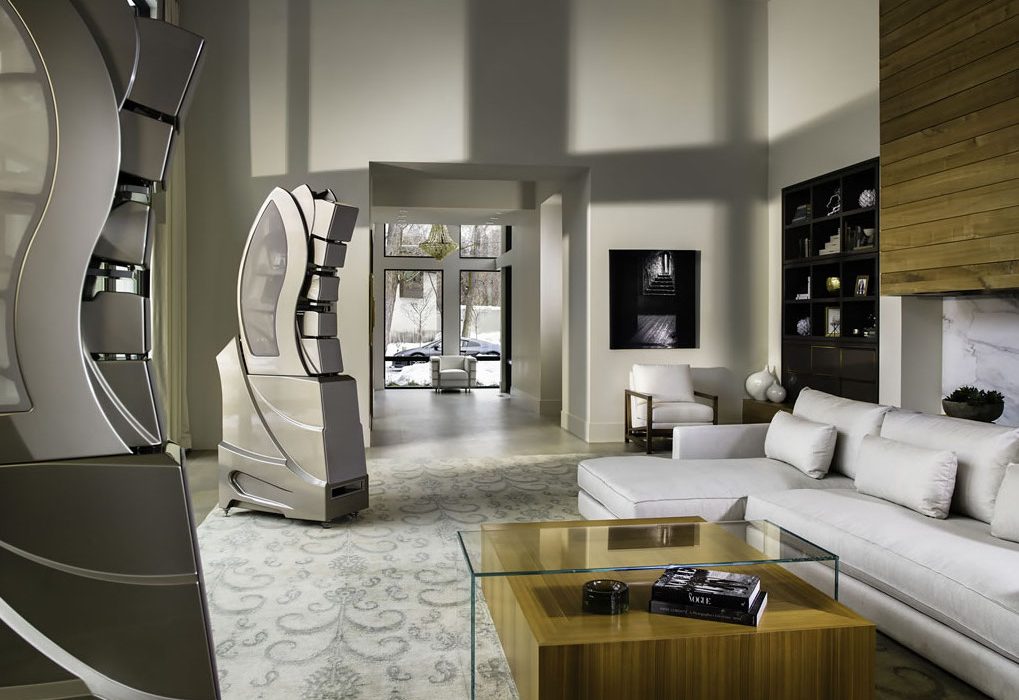Why (almost) every system needs a subwoofer
- Speaker and subwoofer placement in a room is crucial to performance. If you've just dumped your speakers in a room without tuning, you aren't really listening to your speaker.
- Traditional two channel setups are inherently limited in their ability to provide full-range bass coverage.
- Subwoofers in a two channel setup allow you to overcome these limitations.
Speaker placement matters. And we're talking millimetres here - a five millimetre movement in your speaker position can have an impact on the performance of your system, and make it sound better or worse. Our friends at Nordost have written a really amazing step-by-step guide on speaker placement, and why it matters. By the way, if you want a practical demonstration, you're more than welcome to come into the store and we'll show you what a difference it can make. We also have a page on speaker placement and a quick experiment you can do to test it.
How Bass Works
The same is true for subwoofers, almost even more so. To understand why subwoofer placement is crucial, you first need to understand nodes and anti-nodes. As this is a fundamental topic of sine waves that apply not only to audio, but to the whole scientific field of anything science-y, we're not going to repeat it here. Just punch it into Google and there are amazing videos and articles on this made by people much smarter than us. But for the purpose of this article, understand that sound is a sine wave, made up of anti-nodes, where the maximum amplitude (or amount) of sound is produced, and nodes, where almost no change in sound is produced.

Subwoofers produce bass, and by their nature, bass wavelengths are huge. Imagine you had a 100 Hz test tone that you played through your subwoofer. This frequency in sound has a wavelength of 3.3 metres. This means there is 3.3/2 = 1.65 metres between anti-nodes, and 1.65 metres between nodes, meaning that for every 1.65 metres you walk away or towards your subwoofer, you will go from hearing the full force of your subwoofer playing a 100 Hz, to hearing almost nothing at all, and back to full force.
And that's just 100 Hz! At 150 Hz, you'll hear that every 1.1 metres. At 200 Hz, which is where a lot of subwoofers start taking over from your main speakers, it's every 0.85 metres! That means that if your chair is 0.85 metres too far forward or back, you're in danger of missing out from a whole chunk of music or special effects.
Now, in reality, it's a lot more complicated than that. The above example only mentions the sound being produced directly from the subwoofer. But most of the time, people have rooms, and bass will be bouncing around all over the place, reflecting from walls and ceilings. But nevertheless, the example serves to illustrate the fact that plonking a subwoofer in a room and hoping for the best is like shooting at a target whilst blindfolded - you might get some of the frequencies, but you'll probably be missing a lot of them.
So! Why do we think that almost every stereo system can benefit from a subwoofer?
Your stereo speakers also produce bass, and even if you spend hours tweaking the speakers for maximum bass for your chosen listening position (and by the way, your specialist retailer really should be taking the time to do that for you), there's a very high chance, almost guaranteed, that you're going to be missing out on some bass frequencies, especially given that speaker positioning for a given room tends to be symmetrical. This is where the subwoofer comes in - having another source of bass in a different physical position to your stereo speakers helps you cover more bass frequencies by sheer fact that the position of the nodes and anti-nodes produced by the speakers and subwoofers will be different, thereby reducing the chance you'll be sitting in a node. To provide even more coverage, a second, asymmetrically placed subwoofer will further increase your chances of not being in a subwoofer node.
But how do you know where to put your subwoofer? Well, this is where the crawl test comes in - and it's much less complicated than a lot of "gurus" say it is. Simply get your subwoofer and put it where you're going to sit in the room. Turn it on to a moderate volume and walk around the room, around the front of the room or in the area where you are planning to connect it to your system. Listen and compare positions - you're looking for the position where you hear the most amount of bass. Mark the spot, take your subwoofer, and plonk it there. Wire it in, and you'll have the best spot in the room for it.
Which brings us to our final and most important point, even before you've got your subwoofer in your room. When you're in your specialist retailer evaluating subwoofers, make sure that you're comparing subwoofers in the same physical position. Too often we see customers trying out different subwoofers in stores, where the subwoofers are all in a line and there's a simple selector switch allowing you to hear them all one at a time. The fact is, with what you now know, whilst every subwoofer is going to be playing the same frequencies, you are going to hear them differently because of the different position they are in, resulting in different node and anti-node positions. The correct way to evaluate a subwoofer is to play one, move it to one side, then put the second one in the same position. Only then can you truly hear the differences.



